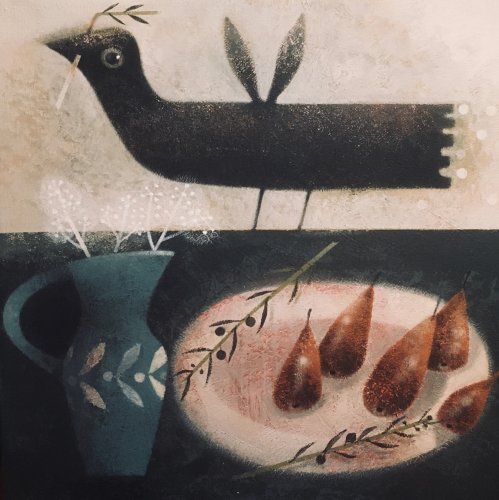Graham Ward is a painter who examines themes of stillness and reflection in much of his figural subject matter. Often, the condition of the individual seems apart from the viewer, yet they remain somehow engaged within the works in which they appear.


Children and animals are an important element, each concerned with their place within the scheme of the image and Ward frequently revisits themes and subjects as part of an ongoing visual vocabulary. Working chiefly in acrylics, Ward's paintings are finished with egg tempera, a medium which perhaps looks back to antique methods of the Romanesque and the Renaissance. Particularly drawn to the works of the early Spanish Schools, in particular, the liminal subject matter discovered in manuscripts and in wall paintings (chiefly for Ward, the astonishing freshness of the 12th century frescoes in the Pantheon of San Isidro in Leon, a place that continues to fascinate and inspire him), he is drawn to the spiritual in painting, and is fascinated by the notion of pilgrimage and of 'arrival'. Darkness and light in his work is intentional. He repeatedly walks the ancient pilgrim roads to Santiago de Compostela in the North of Spain, the routes toward an obsession with something that continues to be a major impetus in the work.
Born in Bradford, Graham Ward lived in London for a number of years, during which time, he was variously an art bookseller, librarian and an archivist in addition to a freelance researcher for a number of major design companies. Ward spent ten years as an illustrator, with commissions that included Penguin and Time-Life publications, in addition to a number of editorial works. He was exhibited by the famous Portal Gallery for a number of years as well as a contributor to exhibitions in Europe and the U.S.
Graham lives and works in Margate on the Kent coast.